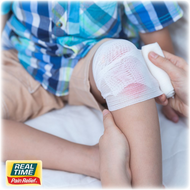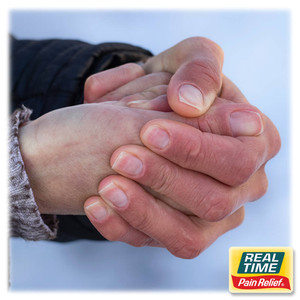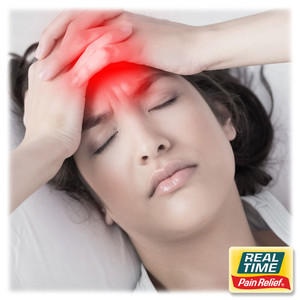10 Home Remedies to Reduce Bruising
18th Oct 2023
We have all had a bruise at one time or another, and all too often it is at the most inconvenient time. Here are 10 home remedies to help you reduce the appearance of a bruise.
What Are Bruises and Why Do We Get Them?
A bruise is caused when the tiny blood vessels under the skin are damaged or broken as a result of trauma. This trauma can be anything from bumping into the coffee table, getting hit with something forceful, or falling. Sometimes you might not even remember what caused it.
10 Home Remedies to Reduce Bruising
Remember these 10 home remedies next time you have a bruise.
#1) Arnica
Arnica can help reduce the pain of a bruise. At least two times a day, apply an arnica based topical lotion to the affected area until the bruise clears up. It can be handy to have an arnica product in the medicine cabinet so you can apply it right after an injury occurs, even before the bruise is noticeable.
#2) Cabbage Leaves
Cabbage leaves possess vitamins as well as phytonutrients. Phytonutrients possess anti-inflammatory properties, which help to reduce swelling. Cabbage also contains vitamin K and vitamin C, both of which are anti-bruising agents.
To use cabbage leaves to treat bruises, begin by cutting the hard stem out of the cabbage leaves. Next, soak the leaves in hot water to soften them. Once they have softened, use a rolling pin to knead the leaves into a paste. Apply the crushed cabbage leaves to the bruise and secure with gauze. Leave the cabbage on the bruise for 30 minutes.
#3) Castor Oil
Castor oil promotes lymph flow, boosts white blood cell production, and soothes the area. Plus, it can help minimize discoloration. To use for bruising, apply castor oil to a cotton pad or ball, place it on the bruise, and then wrap it with gauze. Allow it to sit at least 15 minutes, or until the pain subsides.
#4) Tea Bags
Both green and black tea bags contain tannins, which help to constrict blood vessels when applied to the skin. This constriction stops blood from flowing to the bruises and helps get rid of the discoloration that accompanies a bruise. Tea also contains bioflavonoids, which may help to reduce swelling and pain.
To use a tea bag, soak the tea bags in warm water for 3 minutes, then place on the affected area, and leave it on the bruise for several minutes. Repeat the application several times a day.
#5) Witch Hazel
For generations, witch hazel has been used as a natural treatment for skin problems. It contains natural astringent properties which make it an excellent remedy for bruises. To apply, soak a thin cloth in witch hazel and apply it to the bruise for a few minutes at least twice a day. Repeat this process every day until the bruising disappears.
#6) Onion
As long as the skin has not been cut, onion can help reduce bruises. They contain a compound called, Alicen, which can help to stimulate lymphatic flow and prevent excess blood from collecting below the skin. Here are 2 ways to use onions for your bruise.
- Cut up the onion and place a slice or two on the bruise. Wrap it with gauze to hold it in place for at least 15 minutes.
- Dip onion slices in apple cider vinegar and gently rub over the bruised area.
#7) Parsley
Parsley may help bruises fade quickly because it contains high amounts of vitamin K. Fresh parsley is the most effective for bruises. Simply crush the parsley leaves, spread the crushed leaves over your bruise, and secure them with a bandage.
#8) St John’s Wort Oil
St John's Wort contains large amounts of tannins, which are astringents that can help with capillary bleeding. These properties can help to reduce the discoloration and the healing time. Apply St. John's Wort Oil to your bruise several times a day until the bruising has cleared up.
#9) Sunlight
Ultraviolet rays are known to break down bilirubin, a byproduct of hemoglobin breakdown that causes bruises to turn a yellowish color as it fades. Exposing the bruise to sunlight for 10-15 minutes can help accelerate the breakdown of bilirubin.
#10) Vinegar
Vinegar is known to increase blood flow near the skin's surface. This helps to dissipate the blood that has pooled in the bruised area. Simply mix vinegar with warm water and soak a thin cloth in the mixture. Apply the thin cloth to the bruised area for a few minutes several times a day.
Other Tips to Treat Bruises
- Use your preferred remedy from above as many times as possible throughout the day.
- Apply a heating pad to your bruise to help with the swelling and pain.
- A cold pack is also effective at providing relief.
- Elevate the injured area as much as you can. This encourages the blood to flow away from the injury, which can help reduce swelling and discoloration.
For over 20 years, families across the U.S. have turned to Real Time’s lotions and creams for PAIN RELIEF YOU CAN TRUST®. From Lifestyle Essentials, through our Nujuvena line, to Pain Relief Formulas, Real Time has you covered.





